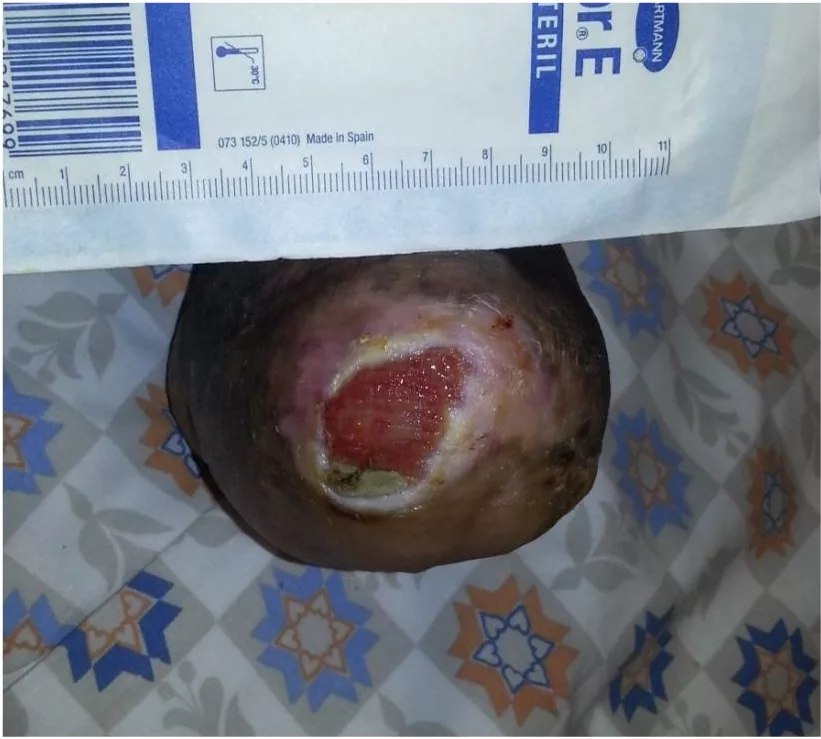Publié le novembre 12 2024

Étude réalisée par :
Jonathan Rosenblum, vice-premier ministre.
Patient:
Homme diabétique de 57 ans.
Histoire:
Le patient a subi une amputation transmétatarsienne (TMA) et le moignon n'a pas du tout cicatrisé avant le traitement avec un produit à base d'Inula. Taux de sucre dans le sang non contrôlé. Le traitement standard des plaies précédent était inefficace.
Présentation de la plaie :
Ulcération de pleine épaisseur avec tissu fibreux. Granulation et biofilm malsains présents en raison de la chronicité de la plaie.
Méthodologie de l'étude :
Utilisation quotidienne du produit pour les plaies à base d'Inula de Lavior.
Produit(s) utilisé(s) dans l'étude :
Soins des plaies diabétiques D-Care.
Durée de l'étude :
4 semaines – Étude de marqueurs prédictifs de 4 semaines.
Récit de traitement

PRÉSENTATION INITIALE
Taille de la plaie : 13,8 cm. Plaie de stade 3 précoce. Tissu fibreux évident avec tissu de granulation malsain. Présence de biofilm dû à la chronicité de la plaie.

APRES 1 SEMAINE DE TRAITEMENT
Le tissu de granulation prend une couleur rouge plus foncée. La plaie diminue de taille. Les bords de la plaie se délimitent et deviennent moins adhérents à la plaie, ce qui permet un débridement.

APRES 2 SEMAINES DE TRAITEMENT
La taille de la plaie continue de diminuer. Le biofilm est perturbé. Des escarres continuent de se former autour de la plaie.

APRES 4 SEMAINES DE TRAITEMENT
Taille de la plaie : 5,6 cm. Les bords sont exempts d'escarres. Le tissu épithélial entoure le tissu de granulation sain. La taille de la plaie a considérablement diminué.
RÉSUMÉ DES RÉSULTATS
Au cours de cette période de 4 semaines, la cicatrisation de la plaie est de 59 %. Comme le montrent les photos, le tissu de granulation sain a remplacé la plaie fibreuse et non cicatrisante grâce aux propriétés cicatrisantes du produit LAVIOR D-Care.


